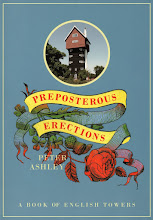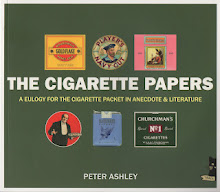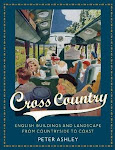skip to main |
skip to sidebar
First thing, this is in Wales not England. But having re-discovered the original transparency I had to share it with you. In 2004 I was working on the book to go with the second BBC Restoration television series. I went everywhere from a salt works in Cheshire to a gaol in Armagh, and must be the only person who has ever been to the Orkneys by ship just for an afternoon. (Apart from the crew, obviously.) But that's another long-winded story. I had the immense privilege of seeing things few people will see, mainly because all the buildings shown would've benefitted greatly from the exposure and been 'restored'.
I do hope this collage of film posters and star pictures is still on the wall of a back room in the Celynen Working Men's Institute and Memorial Hall in Newbridge, Caerphilly. Celynen had a large coal mine that employed over 1,700 men who produced around 10,000 tons of coal a week. This was the centre of their relaxation, opened in 1908, and by the early 1920s boasted a dance floor, cinema and theatre. So the films would have arrived with their posters, and I like to think of a movie buff snipping pictures from magazines and creating this collage over the years. Although I can't help wishing that the Casablanca poster, and one (out of shot) for The Ladykillers had been kept intact and hidden up in the projection room which I also photographed, complete with the spare bulbs for an immense projector.
I've been looking at the work of James Bateman (1893-1959) recently, spurred on by the cover of Clive Aslet's Villages of Britain which features Bateman's probably best known painting of a Cotswold farm (above), and of which the publishers sadly only give credit to the picture library. I first saw it when it was used for another cover, this time on Ian Jeffrey's absorbing The British Landscape 1920-1950 and fully credited as Haytime in the Cotswolds, oil on canvas 1939.
Yesterday I came across another Bateman painting that stopped me in my wayward tracks. This was Lullington Church, another work from 1939. It's the kind of thing that makes me yearn for springtime, much as classic Underground posters do like James McIntosh Patrick's Harrow Weald and Clare Leighton's Lambing, both from 1938.
I was immediately transported by this image of a country church, imagining myself walking up to that open gate and hearing rooks arguing up in the bower of trees. In my head it's an early springtime Sunday morning, and just as I'm wondering if the gate's been left open by the verger who's just gone in to put the oil heaters on I hear the sound of a sweeping brush and see the lady by the door.
Those of you who read my Sussex blog post before Christmas will know what's coming next. At first I got it confused with Lullingstone up in my old stamping ground of the North Downs (the building bears a slight resemblance) but soon realised that the immediate environs were very different. And on finding Lullington I discovered, yes, it's near the Cuckmere river but certainly right in the nexus of the Ouse Valley that has occupied my thoughts for so long.









